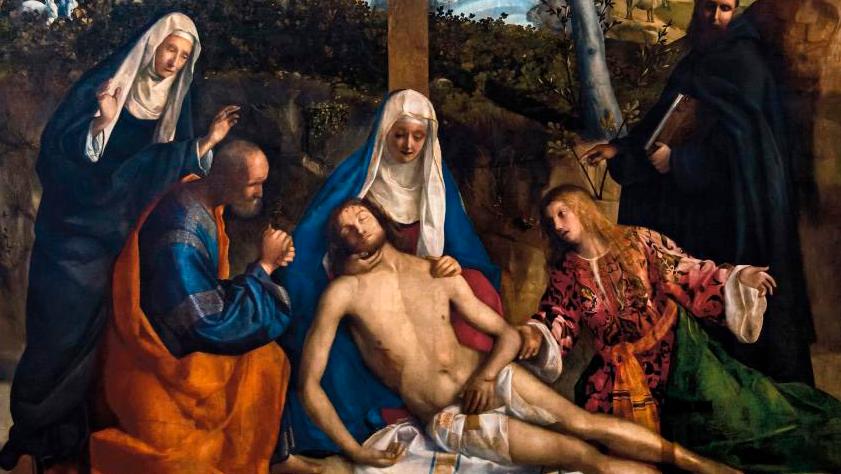Celebrating the beauty and diversity of life, Giovanni Bellini painted nature in a different thousand ways. Inspired by the art of his Italian and Flemish contemporaries, he became a master of landscape painting before the genre existed.
Giovanni Bellini (c. 1435–1516), Lamentation Over the Dead Christ with the Virgin, Saint Joseph of Arimathea and Mary Magdalen between Saint Martha and Filippo Benizi, c. 1510–1516, oil on canvas, 445 x 310 cm/175.19 x 122.04 in. Venice, Gallerie dell’Accademia.
“Giovanni Bellini was a deeply meditative artist who never grew tired of evoking the old, understanding the new, and experimenting with both. He was everything he was said to be: first Byzantine and Gothic , then Paduan and a rival of Mantegna, who influenced him, before following in the footsteps of Piero della Francesca and Antonello da Messina, and learning from his student Giorgione, all while remaining himself, with his warm blood and vibrant breath, attesting to a full and profound harmony between man, the trace of man changed into history, and the mantle of nature; between prominent human masses and high, distant clouds heavy with told dreams; between mountain cloisters and ancient apses, shepherds’ caves and urban terraces; between the taupe-colored churches of the patriarchy and enclosures of flocks; between medieval fortresses and the friable rocks of the Euganean Hills. Serenity spreads out over all the abiding sentiments of man: dear beauty, venerated religion, the eternal spirit, deep meaning; it is a choral peacefulness that mixes and nuances feelings depending on the time of day, from…
com.dsi.gazette.Article : 43770
This article is for subscribers only
You still have 85% left to read.
